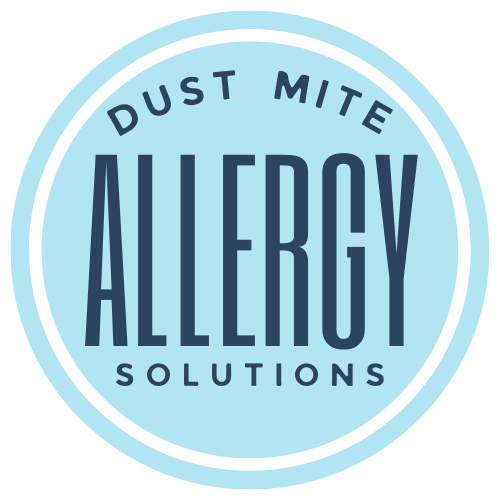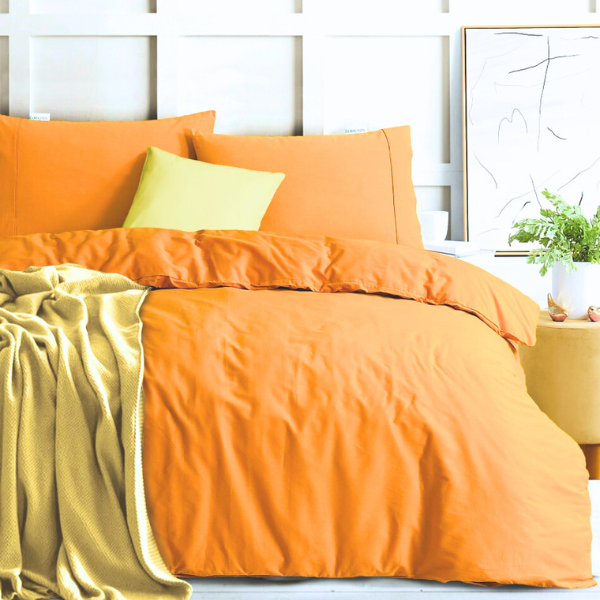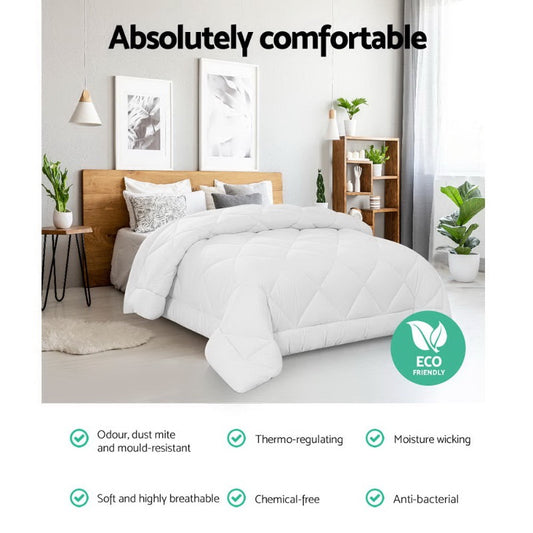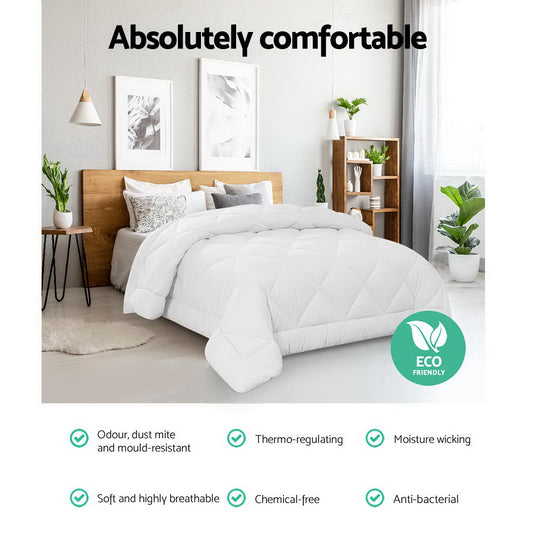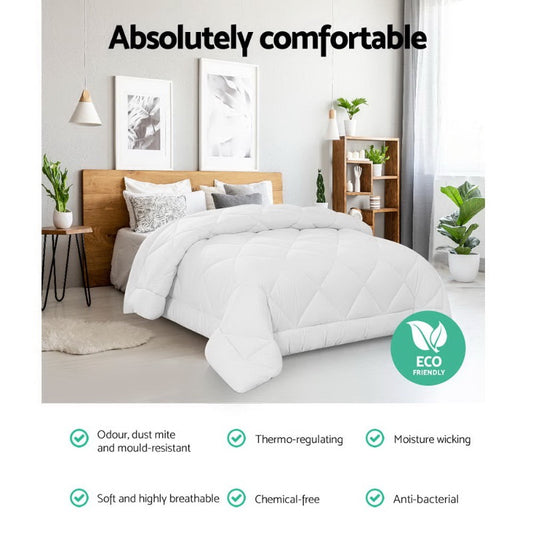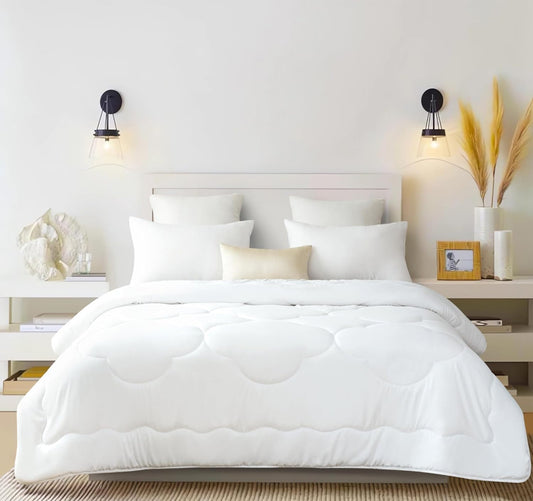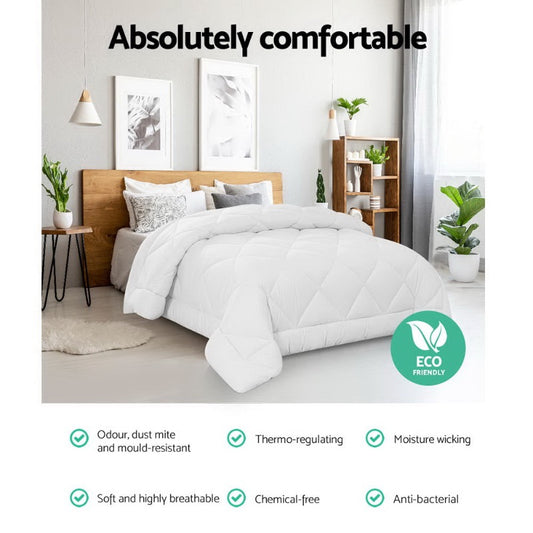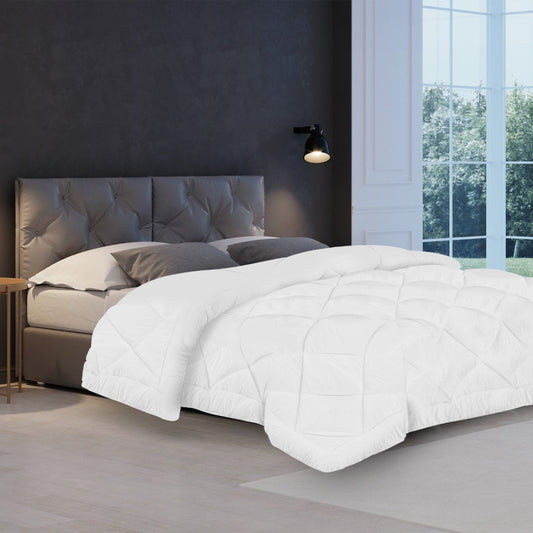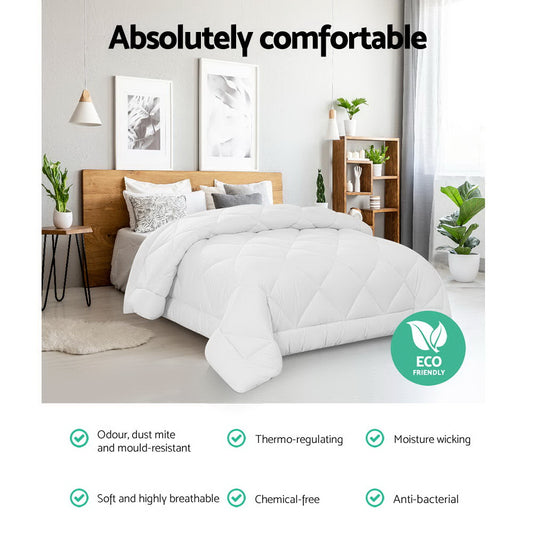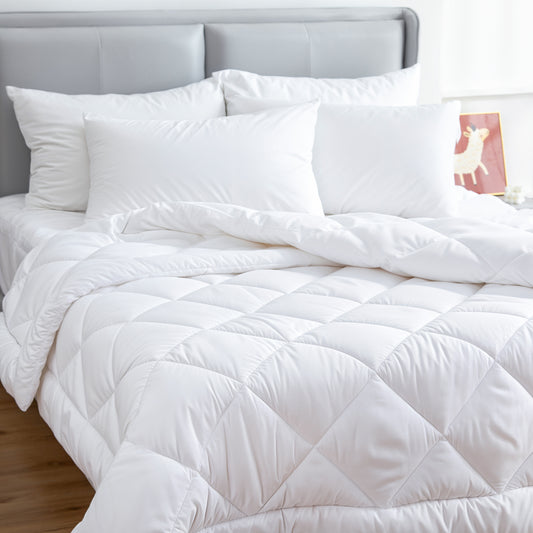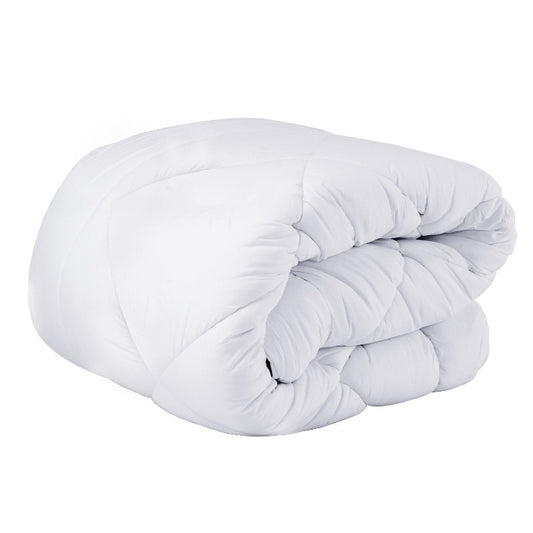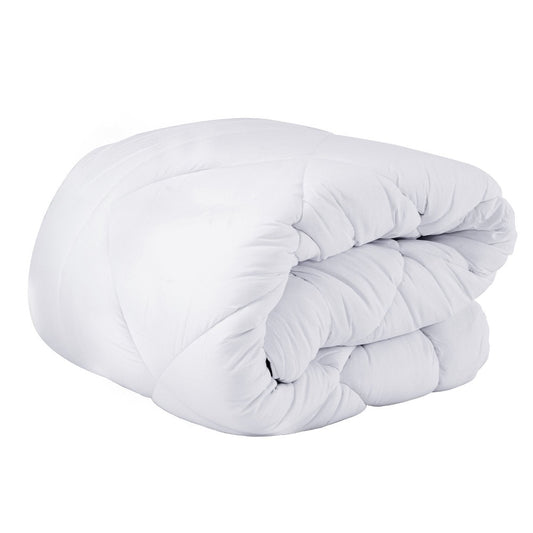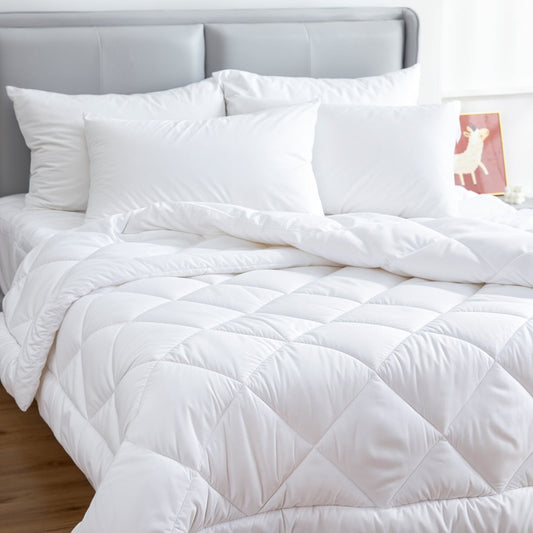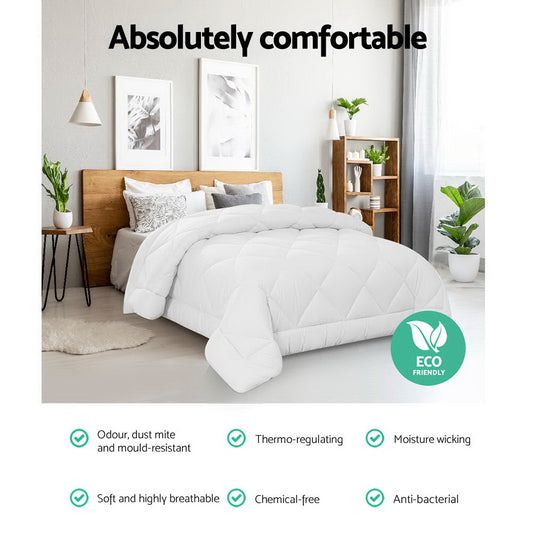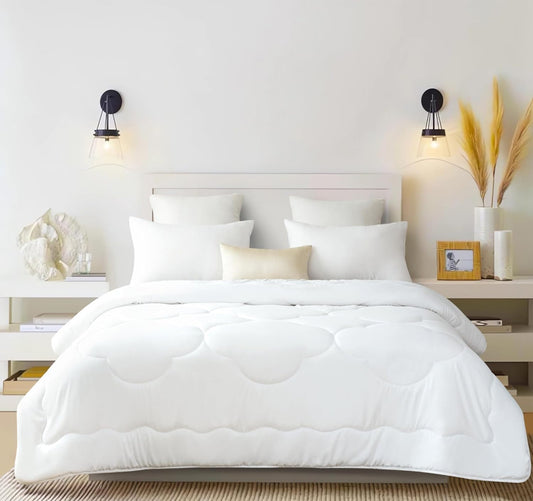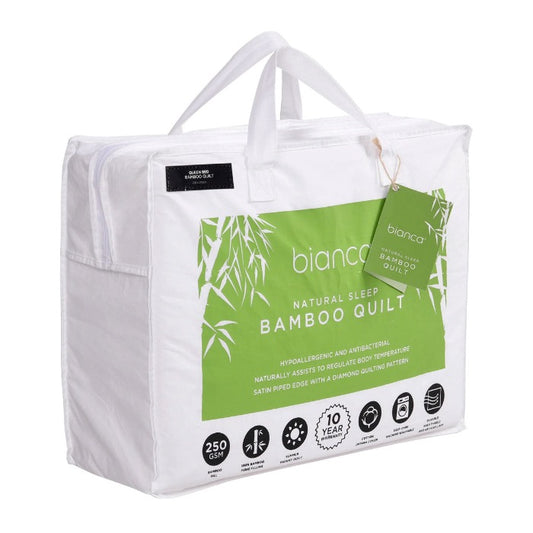Allergy Friendly Quilts, Duvets and Doonas
-

Super King Size Hypoallergenic Quilts & Duvets
Super King Size Hypoallergenic Quilts & Duvets
-

King Size Hypoallergenic Quilts & Duvets
King Size Hypoallergenic Quilts & Duvets
-

Queen Size Hypoallergenic Quilts & Duvets
Queen Size Hypoallergenic Quilts & Duvets
-

Double Size Hypoallergenic Quilts & Duvets
Double Size Hypoallergenic Quilts & Duvets
-

Single Size Hypoallergenic Quilts & Duvets
Allergy friendly quilts and duvets in Single size.
How to choose the best hypoallergenic duvet
Can your blanket be causing allergies?
Doonas can harbor allergens such as dust mites, pet dander, and mould, which can trigger allergic reactions when inhaled or come into contact with the skin. Additionally, some people may be sensitive to specific fabrics or the chemicals used in blanket manufacturing. Regular cleaning and using hypoallergenic blankets made from materials less likely to retain allergens can help reduce the risk of allergies caused by blankets.
What is GSM and how to choose the right quilt for your needs.
How to choose a quilt: In quilts, GSM (Grams per Square Meter) measures filling weight, indicating the quilt's thickness, density, and warmth. Higher GSM means warmer quilts; lower GSM means cooler quilts.
Low GSM (150-250 GSM): These comforters are lighter and ideal for warmer seasons or for those residing in warmer areas such as Queensland and the Northern Territory. They offer comfort without excessive warmth, perfect for summer nights.
Medium GSM (250-350 GSM): Suitable for year-round use in regions with a moderate climate. This range offers a balance between warmth and breathability, which is great for areas with mild winters and warm summers.
High GSM (350+ GSM): These heavier comforters are designed for additional warmth and are best suited for colder months or cooler regions like Victoria or Tasmania during winter.
What is a hypoallergenic quilt?
A hypoallergenic quilt, also known as an allergy-free blanket, doona or comforter, is a type of bedding designed to minimise the risk of triggering allergies or causing allergic reactions in individuals who are sensitive to certain allergens. It is typically made with materials that are less likely to harbor common allergens like dust mites, mould, pollen, pet dander, and other irritants.
How to choose the best hypoallergenic quilt
While there are many brands and options available, here are the key characteristics that make hypoallergenic doona:
- Allergen-resistant materials: Hypoallergenic quilts are often constructed using synthetic materials or special fabrics that have a tight weave, which prevents allergens from penetrating the fabric and accumulating within the quilt.
- Down alternative filling: Instead of using natural down feathers, which can be a common allergen for some people, hypoallergenic quilts use fillings made of hypoallergenic materials.
- Anti-microbial treatment: Some hypoallergenic quilts may undergo an anti-microbial treatment to inhibit the growth of mold, bacteria, and other allergen-producing microorganisms.
- Dust mite resistant: Dust mites are a common trigger for allergies, and hypoallergenic quilts are designed to be less hospitable to dust mites, reducing their presence in the bedding.
- Easy to clean: Hypoallergenic quilts are often machine washable, which helps in regular cleaning and maintaining a more allergen-free sleeping environment.
What materials are used in hypoallergenic quilts?
When choosing a hypoallergenic blanket, it's important to consider the materials used, the fill power and weight, and the type of construction.
Hypoallergenic materials like organic cotton, bamboo, microfiber, and silk are good options, while materials like wool and down can trap allergens. A lower fill power and weight can also make it easier to clean the duvet frequently, which can help reduce allergens.
Look for duvets that are labeled as hypoallergenic or specifically designed for people with allergies.
What are other solutions to allergy free sleep
- Allergen-proof covers: Invest in allergen-proof covers for pillows, mattresses, and blankets to prevent the accumulation of allergens and make cleaning easier.
- Regular cleaning: Wash bedding, including sheets, pillowcases, and blankets, regularly in hot water to eliminate dust mites, pollen, and other allergens.
- Air purifiers: Place air purifiers with HEPA filters in the bedroom to capture airborne allergens like pet dander and pollen.
- Vacuuming and dusting: Vacuum and dust your bedroom frequently, including carpets, curtains, and other surfaces, to reduce dust and allergen buildup.
- Keep pets out of the bedroom: If you have allergies to pet dander, consider keeping pets out of the bedroom to minimize exposure while sleeping.
- Reduce humidity: Use a dehumidifier to maintain optimal indoor humidity levels and prevent mold growth, a common allergen trigger.
- No smoking: Avoid smoking in or near the bedroom, as tobacco smoke can aggravate allergies and respiratory conditions.
- Ventilate the bedroom: Ensure good airflow in the bedroom by opening windows regularly to reduce indoor air pollution.
- Wash stuffed toys: If you or your child has allergies, wash stuffed toys regularly or consider using hypoallergenic alternatives.
- Allergy medications: If needed, consult with a healthcare professional for appropriate allergy medications to alleviate symptoms and improve sleep quality.
- Saline nasal rinse: Use a saline nasal rinse before bedtime to clear nasal passages and reduce congestion caused by allergens.
A Guide to Choosing the Best Hypoallergenic Quilt
How to choose a duvet that won't become a breeding ground for dust mites?
Choosing an allergy-friendly duvet consider materials used, fill power and weight, construction, and specific labeling for people with allergies.
Sleep tight
-
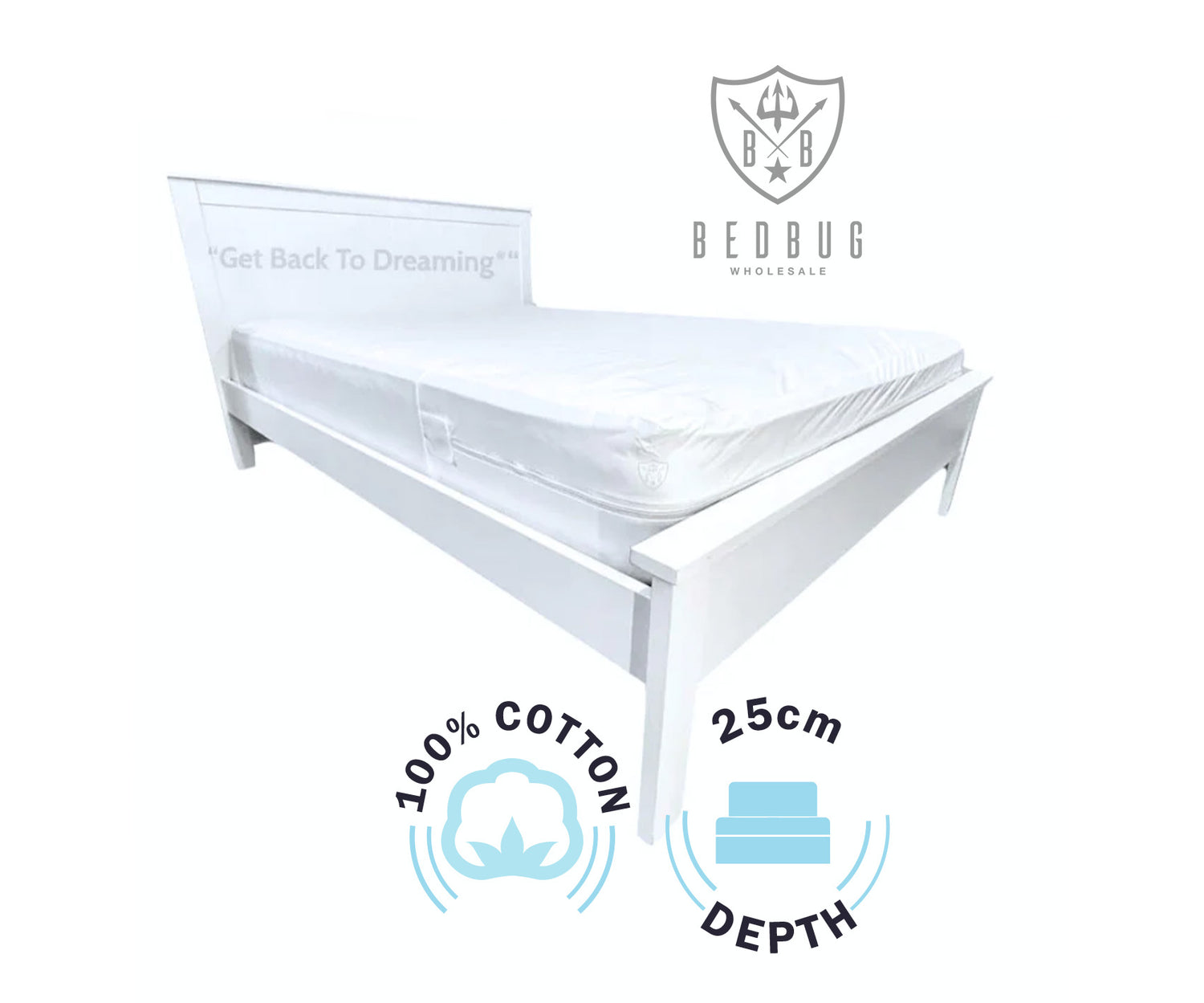
Mattress Protectors for Dust Mites
Mattress protectors designed for dust mite allergies available in cotton and waterproof...
-
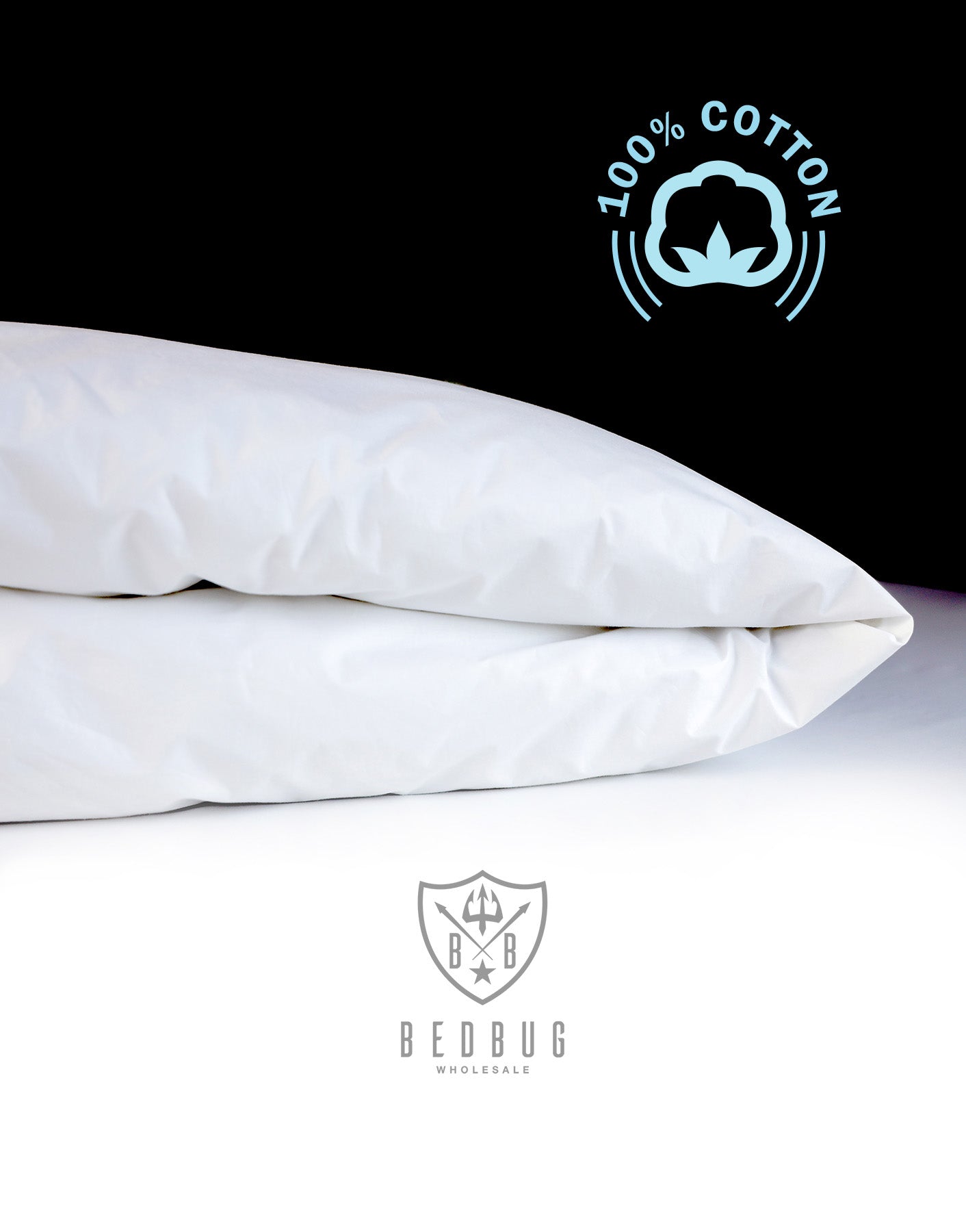
Dust Mite Quilt Protector
Discover the advantages of our dust mite quilt protectors, designed with small...
-
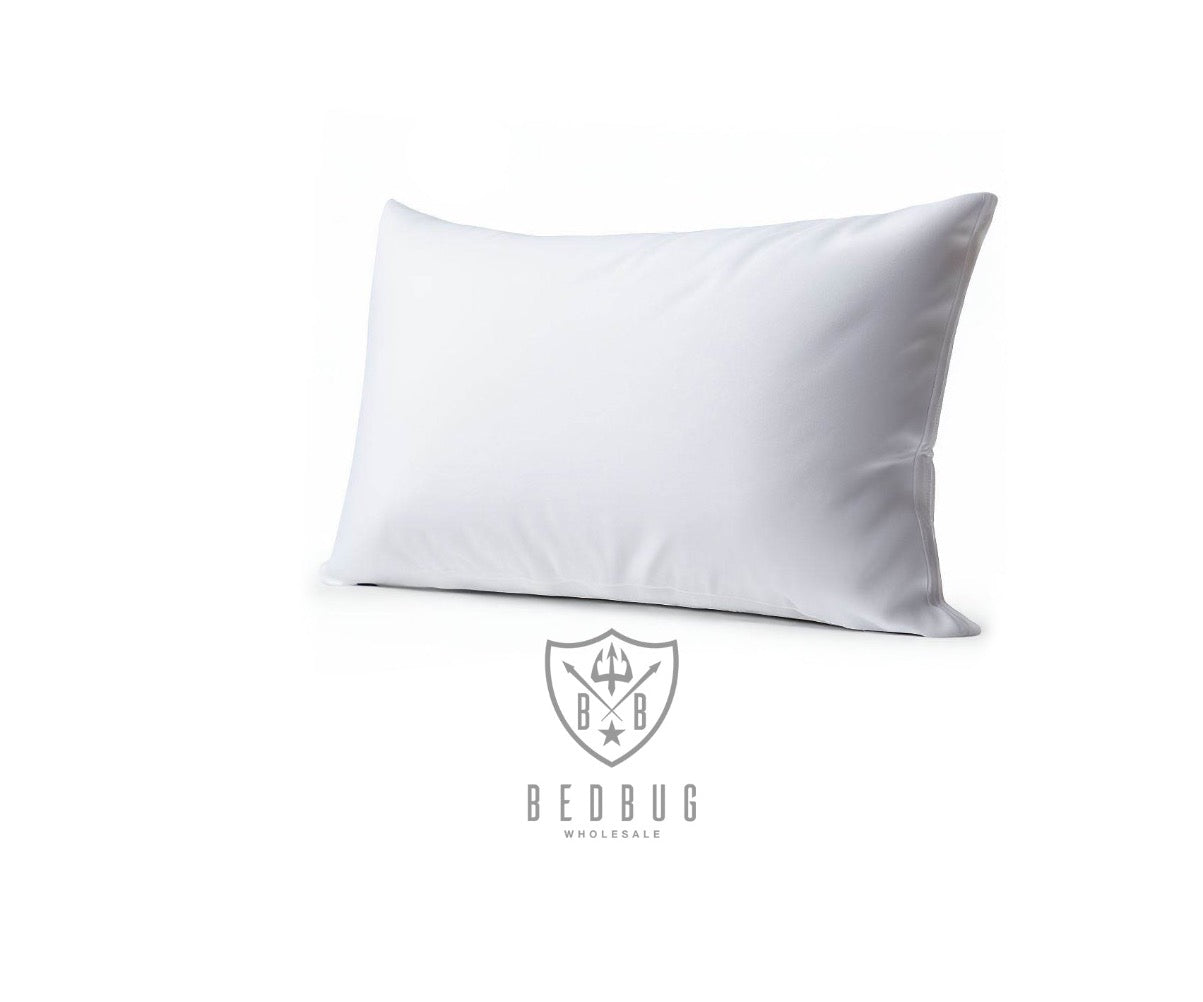
Dust Mite Pillow Protectors
Available in various sizes and shapes, the dust mite pillow protectors will...
-
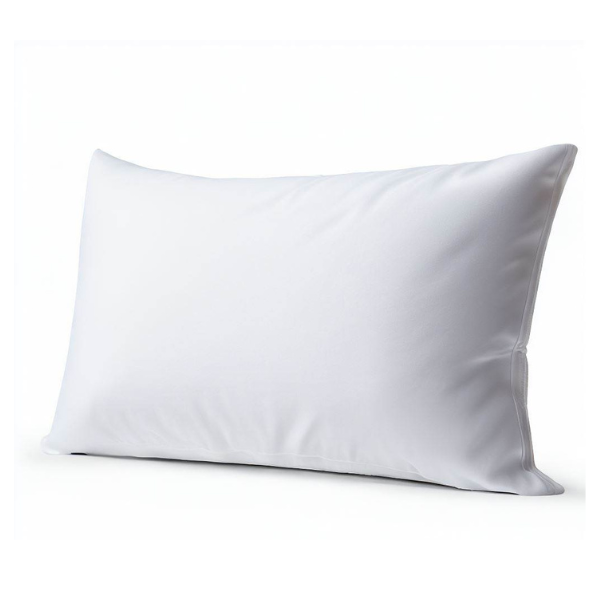
Allergy friendly pillows
Crafted from allergy friendly materials, these pillows are perfect for anyone looking...
-
Bamboo Microfibre Quilt 700GSM I Super King
Regular price $102.00Regular priceUnit price per$158.99Sale price $102.00Sale -
Deluxe High Loft Quilt I 600 GSM I Super King
Regular price $220.00Regular priceUnit price per -
Deluxe High Loft Quilt I 600 GSM I Super King
Regular price $165.00Regular priceUnit price per -
Bamboo Microfibre Quilt 400GSM I Super King
Regular price $89.00Regular priceUnit price per -
Luxury Hi Loft Quilt I 350GSM I SUPER KING I Easyrest
Regular price $268.00Regular priceUnit price per -
Premium Light Weight Cotton Quilt I 250 GSM I Super King
Regular price $188.00Regular priceUnit price per -
Bamboo Microfibre Quilt 800GSM I King
Regular price $88.00Regular priceUnit price per -
100% Premium Bamboo Microfiber Quilt - King Size
Regular price $75.00Regular priceUnit price per -
Bamboo Microfiber Quilt 700GSM I King
Regular price $85.00Regular priceUnit price per -
Bamboo Microfibre Comforter Quilt 700gsm I King
Regular price $120.00Regular priceUnit price per -
Deluxe High Loft Quilt I 600 GSM I King
Regular price $206.00Regular priceUnit price per -
Bamboo Microfibre Quilt 400GSM I King
Regular price $83.00Regular priceUnit price per -
Microfiber/Bamboo Blend, Hypoallergenic & Antibacterial Quilt - King
Regular price $85.00Regular priceUnit price per -
Premium Light Weight Cotton Quilt I 250 GSM I King
Regular price $170.00Regular priceUnit price per -
Luxury Hi Loft Quilt I 350GSM I KING I Easyrest
Regular price $217.00Regular priceUnit price per -
Bamboo Microfibre Quilt 800GSM I Queen
Regular price $127.00Regular priceUnit price per -
Bamboo Microfibre Comforter Quilt 700gsm I Queen
Regular price $120.00Regular priceUnit price per -
Bamboo Microfiber Quilt 700GSM I Queen
Regular price $77.00Regular priceUnit price per -
Deluxe High Loft Quilt I 600 GSM I Queen
Regular price $188.00Regular priceUnit price per -
Microfiber/Bamboo Blend, Hypoallergenic & Antibacterial Quilt - Queen
Regular price $75.00Regular priceUnit price per -
Bamboo Microfibre Quilt 400GSM I Queen
Regular price $73.00Regular priceUnit price per -
Premium Light Weight Cotton Quilt I 250 GSM I Queen
Regular price $161.00Regular priceUnit price per -
100% Premium Bamboo Microfiber Quilt - Queen Size
Regular price $55.00Regular priceUnit price per -
Pure Bamboo Summer Quilt 250GSM I Queen
Regular price $195.00Regular priceUnit price per
